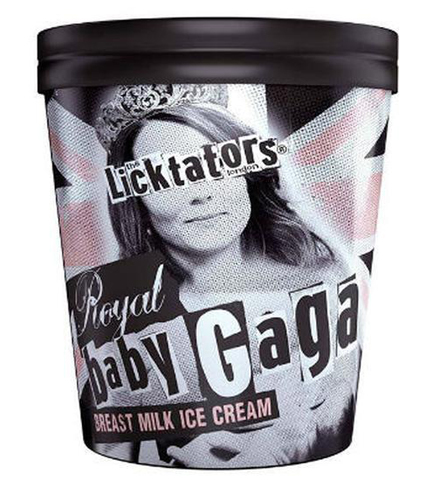
A media frenzy ensued recently when in London, England, an ice-cream shop began to advertise and sell ice-cream made with mother’s milk. “Baby Gaga,” flavored with vanilla and lemon zest, was advertised as a bit sweeter and not as thick as standard ice-cream. Almost immediately, the British authorities seized the inventory and prohibited its sale until tests had been conducted.
Using human breast milk provided by a nursing mother (who was paid the equivalent of $50 for 10 ounces), Baby Gaga ice-cream was enthusiastically purchased by the public, mostly women. That it was quickly prohibited for sale was no surprise; the idea of food made from human secretions opens a door to the troubling notion of making profit from human bodies. While certainly not at the level of cannibalism, the commercialism of food for people made from people smacks a touch too much of “Soylent Green,” the sci-fi film about a future society eating crackers made of the recycled remains of dead people, a decidedly unpalatable idea.
We enthusiastically consume the cut up remains of dead non-human animals and drink secretions collected from animal breasts by the billions of gallons each year. This is considered not only normal, but comprises an enormous industrial-style world-wide industry involved in the birthing of animals, their care and feeding and eventual slaughter. That we find this activity so commonplace as to be almost entirely non-controversial says volumes about how eating habits and cultural activities become normalized over time.
In other parts of the world, the use of human secretions for consumption is considered perfectly normal, too. For example, people in the Philippines use saliva contributed by many individuals to help ferment plant sugars into a popular alcoholic drink called “lambanog.” In Ecuador it’s called “chicha.” These beverages are not considered disgusting by those who enjoy them any more than the drinking of cow’s milk is considered disgusting by us. Such choices, aside from being matters of taste, are cultural norms that develop over time.
If the commercialization of mother’s milk ice-cream is eventually allowed, it too will become a cultural norm. If successful, we can foresee health bars, yogurt, coffee creamer, and other human breast milk products. One must wonder, however, if being a milk donor is the type of career we should be encouraging among our female population, particularly when we consider the ways in which industrial food production so often marginalizes the health and welfare of donor animals. On the other hand, perhaps such a development will increase empathy for cows, goats and the many other animals we so blithely use to satisfy our culinary desires.
I’ve long wondered about the possibility of human beings becoming part of the food chain at the hands of hungry aliens from another world. A “Twilight Zone” episode from the 60s entitled “To Serve Man” touched lightly on this delicate topic, but I’m imagining the full-blown mass-produced alien industrial food production system, alongside its commercial advertising directed at alien consumers. We can begin to get its flavor from the marketing of Baby Gaga ice-cream, and I can already visualize the billboard ad campaign for a half-gallon carton of human mother’s milk produced for aliens with a taste for human secretions, featuring a cute, smiling creature from another world with a mother’s milk mustache and the headline “Got Human?”